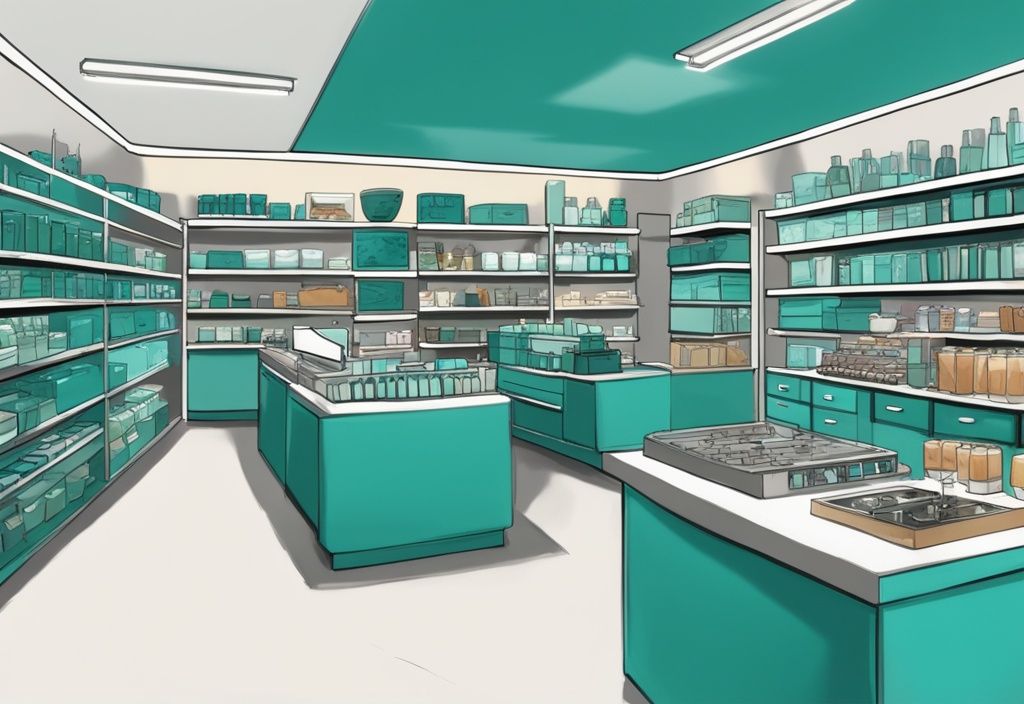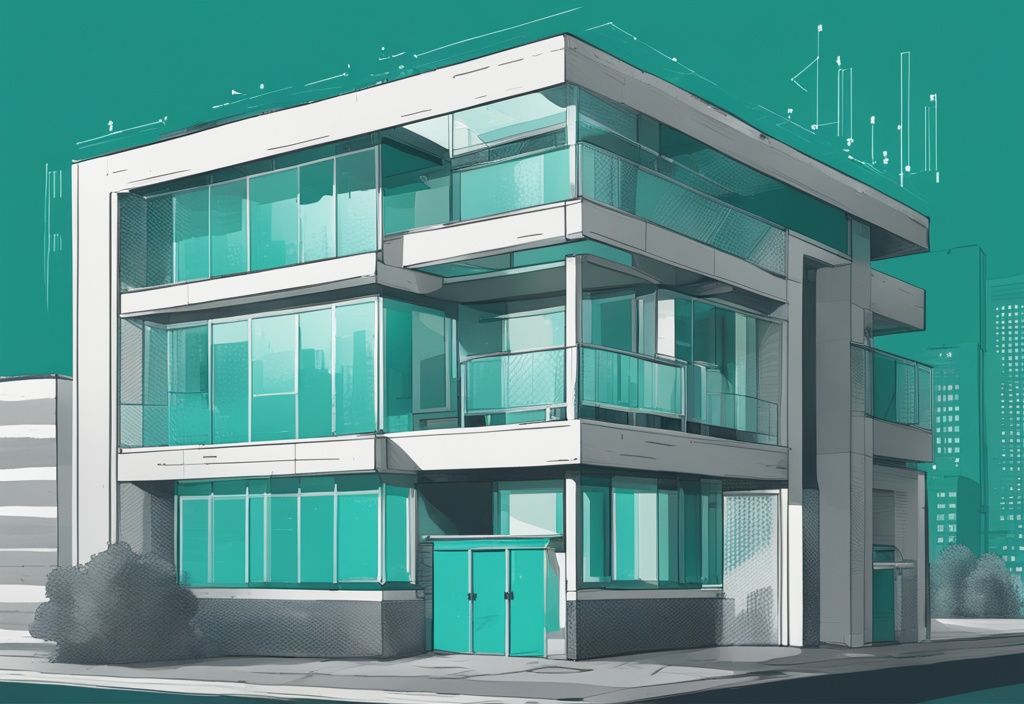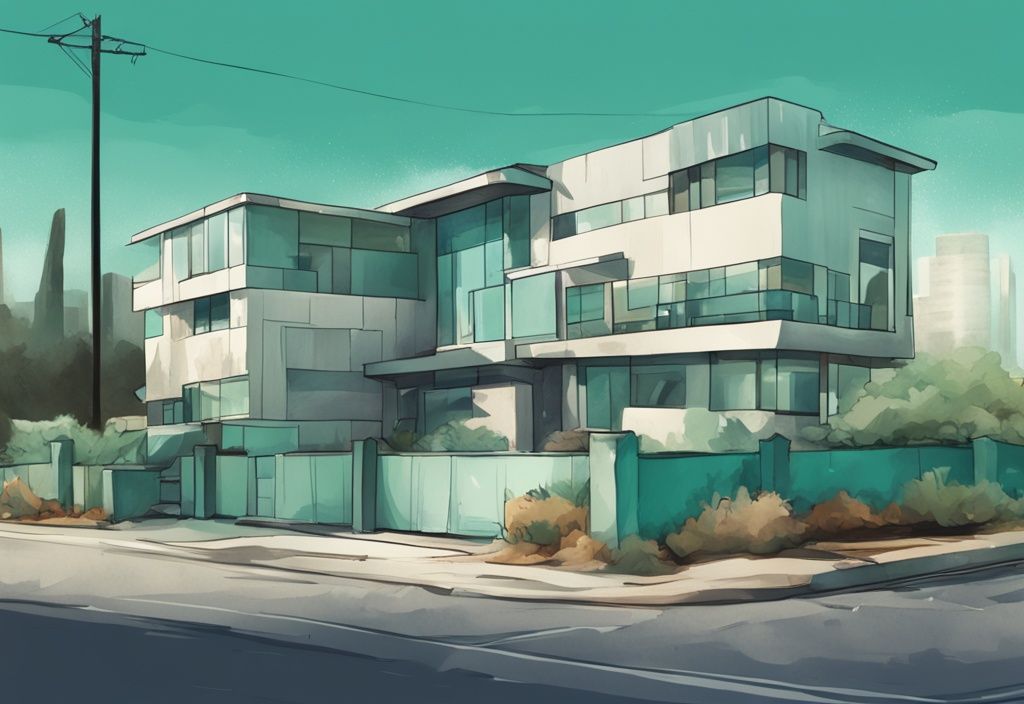Ever wonder why your local coffee shop roaster is fixed to the floor? Yep, it’s a trade fixture in real estate lingo! Sounds technical, huh? Stick around, it’s simpler than you think. I’m Alex Harper and I’m going to help you unravel this often-misunderstood term.
We’ll dive deep into what constitutes a trade fixture, how it differs from everyday fixtures, and its unique legal implications in the real estate world. It’s not about befuddling you with jargon, I believe in making complex concepts clear and relatable. So whether you’re a landlord or a tenant, you’ll grasp insights applicable to your real estate journey.
By the end of this read, you’ll have a firm handle on the role of trade fixtures in property value and taxation, and how they influence lease negotiations. Now, isn’t that a win? Let’s get started.
What Is a Trade Fixture and Its Relevance in Real Estate?
A trade fixture, also known as a chattel fixture, is a specialized piece of equipment attached to property rented by the lessee, which they are entitled to take with them after the lease ends, to facilitate their business operations. For more detailed information on trade fixtures, you can visit this resource. Now, here’s where it gets interesting: unlike regular fixtures that become part of the property, trade fixtures remain the tenant’s personal property. This is a crucial detail for anyone involved in real estate because it significantly impacts lease agreements, determining who owns the fixtures once the lease ends.
Imagine running a trendy cafe—your espresso machines, signage, and unique display counters are all trade fixtures. These items are yours to keep, even after you move out. Understanding the distinction between trade fixtures and standard fixtures can help avoid disputes and ensure both tenants and landlords are on the same page.
Trade Fixture Vs Standard Fixture: Key Differences
Trade fixtures and standard fixtures are fundamentally different when it comes to ownership and removal rights. Trade fixtures are considered personal property of the tenant and must be removed when the lease ends. If left behind, these fixtures could be seen as abandoned and become the landlord’s property.
On the flip side, standard fixtures become part of the property and automatically belong to the landlord once installed. Think of built-in cabinetry or a permanent lighting fixture—these generally stay with the property and often enhance its value long after the tenant has vacated. For those interested in different aspects of real estate, understanding what a short sale is in real estate can offer valuable insights into the selling process.
Practical Examples of Trade Fixtures in Business
Trade fixtures can vary widely depending on the type of business. For instance, in a retail store, trade fixtures might include intricate product display counters, tailor-made shelving units, and specialized lighting to highlight merchandise.
Running a restaurant? Your trade fixtures could be high-end commercial ovens, refrigeration units, and custom tables that cater to your unique dining experience. Salons and spas often have specialized fixtures like salon chairs, wash stations, mirrors, and dryers, all essential for serving clients efficiently. These examples show just how integral trade fixtures are to the day-to-day operations and customer experiences of various businesses, illustrating their importance in any commercial lease agreement. Understanding lease agreements can also be crucial when considering elements like the grandfather clause in real estate, which may impact how these fixtures are handled over time.
Detailed Look at the Legal Framework Around Trade Fixtures
Trade fixtures in real estate hold significant legal weight due to their unique role in a tenant’s business operations. These fixtures are designed to be removed by the tenant at the end or during the lease. Acting outside the general norms of landlord-tenant laws, specific lease clauses should meticulously outline who bears the responsibility for installation, maintenance, and removal, ensuring a clear understanding between both parties.
Tenants’ Rights and Obligations Regarding Trade Fixtures
Tenants have the freedom to install trade fixtures essential for their business activities. This customization of leased space is crucial for efficient operation and optimizing business processes. However, financially speaking, tenants are on the hook for both installation and eventual removal of these fixtures. It’s important to note that lease agreements often come with clauses that might restrict a tenant’s right to remove trade fixtures, especially if there’s been any breach of the lease terms. This safeguard is there to ensure landlords aren’t left with damaged or incomplete spaces.
Conditions for Removal of Trade Fixtures
Several conditions must be met for the removal of trade fixtures to ensure a smooth process:
- Necessary for Business Operations: First and foremost, the removal should be essential to the tenant’s ongoing business activities. Trade fixtures typically play a vital role in daily operations, making their removal indispensable.
- Ensuring No Property Damage during Removal: It’s crucial that tenants remove trade fixtures without causing any damage to the property. If there is any damage, tenants are obligated to compensate the landlord for repairs to uphold the integrity of the premises.
- The Importance of Timely Removal: Timely removal at the end of the lease term is critical. If trade fixtures are not removed promptly, they can be deemed abandoned and subsequently become the property of the landlord.
By adhering to these conditions and clearly addressing trade fixture responsibilities in the lease agreement, potential disputes can be minimized. This ensures a smoother leasing process for both landlords and tenants.
How Trade Fixtures Influence Property Valuation and Tax Deductions
Trade fixtures in real estate are often game-changers, especially since they’re classified as business expenses. This neat little detail not only allows you, as a tenant, to tap into potential tax deductions but also shifts how properties are valued. Unlike standard fixtures that blend into the property, trade fixtures are like the fancy decor you can take with you. They’re removable and temporary, so they don’t really jack up the property’s market value.
When it comes to property valuation, having trade fixtures might catch the eye of business-oriented tenants. But let’s be real—it doesn’t necessarily bump up the property’s overall value. Why? Because trade fixtures are designed to pack their bags and go, sticking with you, the tenant, rather than the property itself.
Impact of Trade Fixtures on Property Value
Trade fixtures generally don’t add to the property’s value since they are separate from the real estate itself. Their temporary and removable nature means they aren’t part of the permanent assets contributing to property valuation. This separation makes trade fixtures a super appealing option for tenants who need custom installations for their biz without really shaking up the lease terms.
Now, let’s talk about specialized trade fixtures. They can swing both ways. On one hand, they attract business tenants hunting for a setup that says “done-for-you.” On the flip side, if these fixtures are too niche, they might limit your pool of potential tenants or buyers, especially if they cater to a very specific market.

Tax Deduction Regulations for Trade Fixtures
From the tax angle, trade fixtures are like golden tickets. They’re generally classified as business expenses, which means you can usually claim tax deductions and shave down that taxable income. However, the nitty-gritty of these deductions can get tricky. So, it’s a smart move to loop in commercial real estate law experts. They can break down the maze of tax regulations, ensuring you navigate the deductibility of your trade fixtures without tripping up on legal hurdles.
Disputes and Issues: Landlord and Tenant’s Guide
In the intricate world of real estate, disputes concerning trade fixtures can present significant challenges for both landlords and tenants. These disputes often revolve around the removal, abandonment, or damage caused by trade fixtures. Moreover, the complexity intensifies if the trade fixtures were financed, creating potential involvement from lenders and third parties. Understanding the nuances and preventive measures related to these issues is crucial for smooth landlord-tenant relationships.
Dealing with Accession, Abandonment, and Lease Breach Issues
One key issue in the management of trade fixtures in real estate is accession. If tenants do not remove their trade fixtures at lease termination, these items are deemed to have become part of the property, consequently transferring ownership to the landlord. This emphasizes the importance of timely and clear removal of trade fixtures by tenants.
Another critical consideration is abandonment. When tenants neglect to remove trade fixtures, such fixtures are classified as abandoned, once again resulting in a transfer of ownership to the property owner. Tenants should prioritize the removal of their business-related installations to prevent unintended forfeiture.
Lease breach conditions further complicate the landscape. If a tenant breaches the lease agreement, any stipulated clauses regarding the ownership of trade fixtures come into effect. Often, these conditions mandate that trade fixtures revert to the landlord, stripping the tenant of their property rights over these installations. Thoroughly understanding and adhering to lease provisions can prevent such adverse outcomes for tenants.
Navigating Legal Disputes Around Trade Fixtures
When legal disputes arise over trade fixtures in real estate, courts generally lean towards protecting the tenant’s investment. However, this consideration is balanced against any potential unrepaired damage inflicted on the landlord’s property due to the removal of fixtures. This underscores the importance of tenants ensuring that any removal occurs without causing property harm.
Preventing disputes starts with a well-drafted lease. For those interested in exploring the field of real estate further, understanding how to become a real estate broker can be a valuable step. Clearly delineating what constitutes a trade fixture within the lease can avert misunderstandings between landlords and tenants. Explicit terms regarding the installation, maintenance, and removal processes should be documented meticulously.
Given the complexity of trade fixture disputes, consulting with commercial real estate lawyers is invaluable. These experts can provide guidance in drafting lease agreements that withstand legal scrutiny and assist in resolving contentious issues efficiently. By leveraging professional advice, both landlords and tenants can safeguard their interests and foster a harmonious leasing relationship.
Variety of Trade Fixtures: An Overview
In the realm of real estate, trade fixtures play a pivotal role in the functionality and operations of various businesses. These fixtures, designed to be attached yet removable, can significantly impact how efficiently a business runs. Notably, no universal list exists outlining all trade fixtures, as they vary widely depending on the specific nature of each business. However, they can be broadly categorized into chattel fixtures, attached fixtures, and integral fixtures. This categorization helps in understanding their application and relevance in any business context.
Understanding Different Types of Trade Fixtures
To navigate the landscape of trade fixtures in real estate, it’s imperative to understand the distinctions among the types available:
- Chattel Fixtures: These are movable items that a business uses in its daily operations. They are designed to be easily installed and removed without causing damage to the property. Examples include restaurant tables, chairs, and retail shelving units. Chattel fixtures provide flexibility for businesses to rearrange layouts or upgrade as needed.
- Attached Fixtures: As the name suggests, these fixtures are more securely fastened to the property, often requiring more complex installation processes. Examples include chandeliers, signage, or built-in display cases. While they are attached to the property, they remain the tenant’s property and can be removed when the lease ends, provided this can be done without damaging the premises.
- Integral Fixtures: These fixtures are essential to a business’s operations, making them crucial for functionality. Examples include industrial ovens in restaurants, refrigeration units in grocery stores, or specialized machinery in manufacturing plants. Integral fixtures are typically custom-installed to meet specific business needs and, while removable, require careful detachment to ensure no harm is done to the property.
By understanding these categories, businesses and landlords can more effectively manage installations, removals, and the associated responsibilities and rights regarding trade fixtures. This knowledge ensures seamless operations and minimizes disputes over fixture ownership and property condition at the lease’s end.
The Distinction Between Trade Fixtures and Tenant Improvements
In the realm of real estate, understanding the differences between trade fixtures and tenant improvements is crucial for landlords and tenants alike. This distinction lies in the permanence and ownership of these modifications.
Trade fixtures, also known as chattel fixtures, are improvements that tenants attach specifically to conduct their business. These fixtures are considered the tenant’s personal property and can be removed when the lease ends, provided they don’t damage the property during removal. Think of retail display shelves, salon chairs, or restaurant ovens—all tailored to the unique needs of the tenant’s business operations.
Tenant improvements, on the other hand, refer to more permanent changes made to the leased space. These alterations are designed to enhance the value and functionality of the property and usually become the landlord’s property once installed. Examples include new walls, office partitions, or upgraded lighting fixtures. These improvements seamlessly integrate into the structure and cater to a broader tenant base over time.
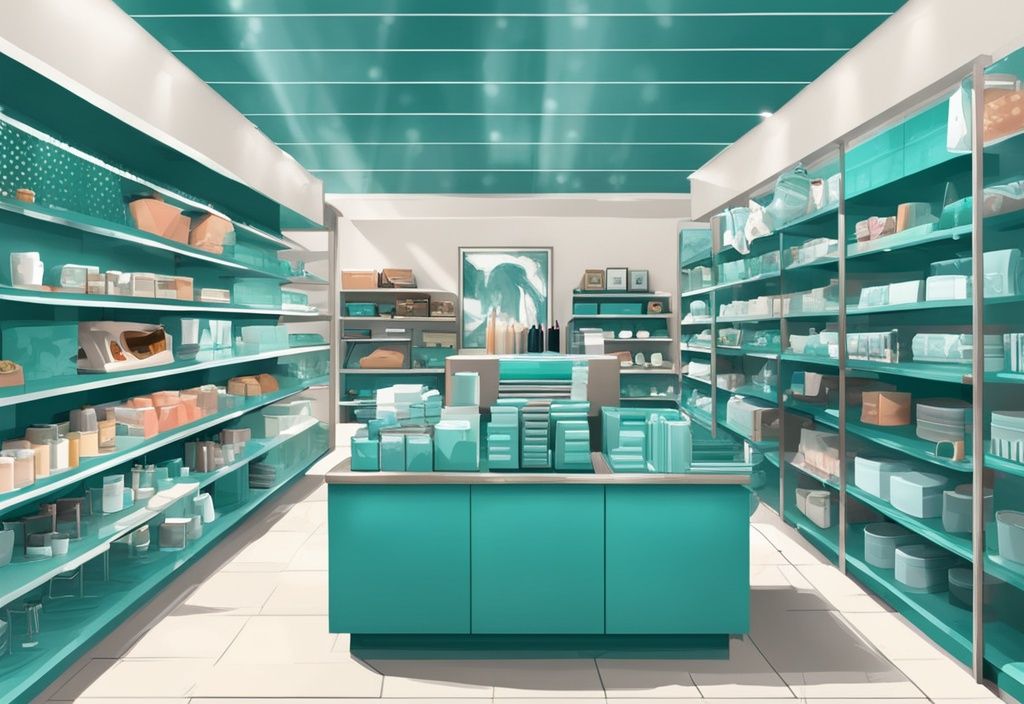
Defining Tenant Improvements in Relation to Trade Fixtures
Tenant improvements are permanent enhancements made to a leased space, meant to stay with the property after the tenant’s lease has ended. They often serve to increase the property’s market value and aren’t intended to be removed. Imagine adding new walls to create separate office spaces, installing advanced lighting systems to boost visibility and aesthetics, or making comprehensive HVAC upgrades for efficient climate control. Unlike trade fixtures, which are temporary and tenant-specific, tenant improvements blend seamlessly with the property and serve future tenants as well.
Ownership and Removal Policies for Trade Fixtures vs. Tenant Improvements
Ownership and removal policies for trade fixtures and tenant improvements differ distinctly due to their intended permanence and function.
- Trade fixtures are the tenant’s personal property. Tenants can legally remove these fixtures at the end of the lease period, as long as they don’t damage the property during the process. This allows tenants to reclaim their investments tailored to specific business needs.
- Tenant improvements become the landlord’s property once installed. These permanent alterations aim to enhance the overall value of the premises and stay with the property even after the tenant moves out, benefiting future tenants or increasing the landlord’s ability to attract new lessees.
Understanding these key differences between trade fixtures and tenant improvements is fundamental in drafting clear lease agreements and avoiding disputes. This ensures that all parties have a mutual understanding of their rights and responsibilities regarding property alterations.
Application of Trade Fixtures in Different Business Domains
Trade fixtures play a critical role in various business settings, enhancing both functionality and customer satisfaction. Designed to be installed by tenants to aid in their day-to-day business operations, these fixtures are removable at the lease’s end. The application of trade fixtures varies widely across different business domains, each having specific requirements and examples.
Retail Stores
In retail environments, trade fixtures are essential for effective product presentation and offer a pleasant shopping experience to customers. Examples include:
- Shelving Units: Often customized to fit specific store layouts, shelving units allow for optimal product display and easy accessibility.
- Display Counters: Crucial for showcasing key products, display counters can be strategically placed to maximize visibility and sales.
- Lighting Systems: Tailored lighting enhances product appeal and creates an inviting store atmosphere.
Restaurants
Restaurants rely heavily on various trade fixtures to ensure smooth kitchen operations and a comfortable dining experience. Examples include:
- Cooking Equipment: Commercial ovens, grills, and stoves are necessary for food preparation and are integral to a restaurant’s operation.
- Refrigeration Units: Essential for maintaining food safety and quality, refrigeration units are typically custom-fitted to the kitchen’s layout.
- Tables and Chairs: Dining furniture must be durable and often match the restaurant’s theme, providing comfort and style for patrons.
Spas and Salons
For spas and salons, trade fixtures are vital in creating a relaxing and professional environment, meeting both functional and aesthetic needs. Examples include:
- Salon Chairs: Ergonomically designed to provide comfort during treatments, salon chairs are crucial for both client satisfaction and operational efficiency.
- Mirrors: Large and strategically placed mirrors enhance the space and are essential for various beauty treatments.
- Washing Stations: Custom-installed to fit the salon setup, wash stations are used extensively and need to be both functional and appealing.
Trade Fixtures: A Necessity for Retail Stores, Restaurants, Spas etc.
Trade fixtures in real estate are not just optional additions; they are necessities that cater to the specific needs of different businesses, enhancing both functionality and customer experience.
- Specific to Business Needs: Tailored to meet the unique operational requirements of the business, these fixtures help create an efficient workflow and a pleasant environment for customers.
- Enhancing Functionality and Customer Experience: Properly installed trade fixtures ensure that businesses can operate smoothly while providing a superior customer experience.
- Careful Installation and Removability: It is vital that trade fixtures be installed in a way that allows for their easy removal without damaging the property. This ensures that tenants can recover their investments without incurring extra costs for property repairs.
Understanding the application of trade fixtures in real estate allows business tenants to make informed decisions that enhance their operations while safeguarding their investments. Proper installation, maintenance, and eventual removal of these fixtures align with both business goals and lease agreements, ensuring a smooth and conflict-free tenancy.
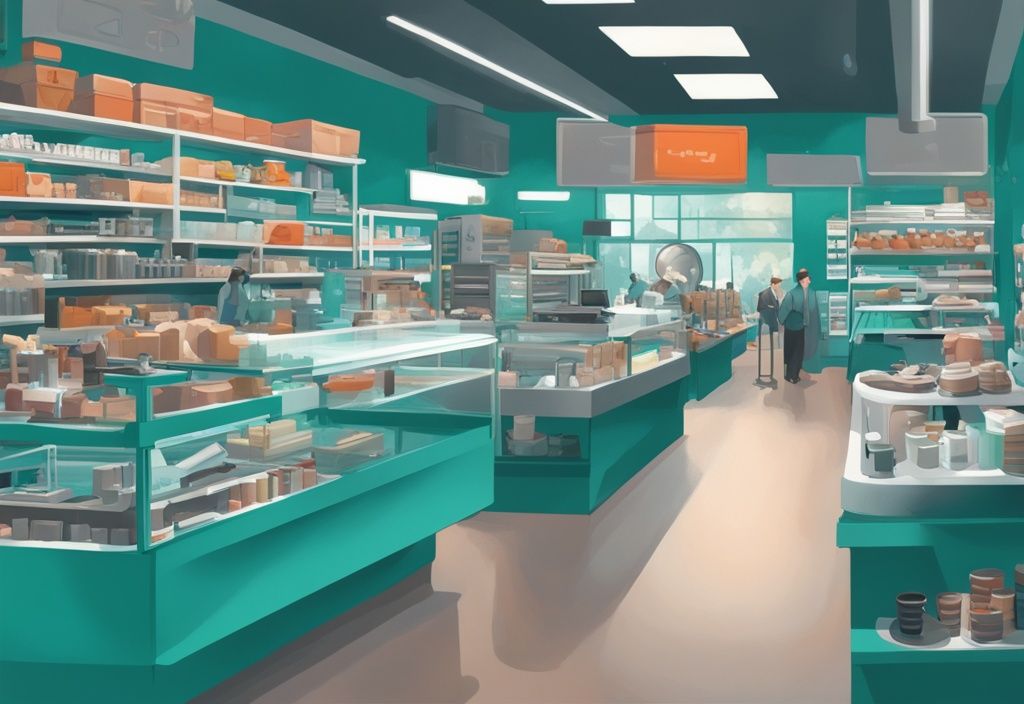
Recommendations for Handling Trade Fixtures
Effectively managing trade fixtures in real estate starts with clear communication and detailed lease agreements. It’s crucial to define what trade fixtures are, lay out procedures for their removal, and set specific timelines to avoid potential disputes and ensure mutual understanding between landlords and tenants.
The Importance of Clear Communication in Lease Agreements
Clear communication within lease agreements is key to avoiding misunderstandings over trade fixtures in real estate. By detailing which fixtures can be removed and under what conditions, both landlords and tenants can manage their expectations accurately. Imagine it like setting ground rules in a shared household: everyone knows what’s allowed and what isn’t.
This clear-cut approach means tenants know what they can and can’t remove without causing property damage. Meanwhile, landlords understand their rights if fixtures are left behind or if repairs are inadequate. It’s all about ensuring everyone knows where they stand, reducing the chance of conflicts down the line.
Why Consult Commercial Real Estate Law Experts
Consulting with commercial real estate law experts can make a world of difference when drafting lease agreements. These professionals ensure that the lease meets legal standards and includes precise terms regarding trade fixtures in real estate.
Think of them as your guide through a maze of legal jargon. They help clarify who is responsible for what, ensuring the lease covers all possible scenarios involving trade fixtures. Their expertise not only safeguards your investment but also fosters smooth relationships between landlords and tenants.
Customizing Lease Agreements to Cater to Business Needs
Customizing lease agreements to suit specific business needs is critical. It ensures leases address the nature of the trade fixtures the tenant might need. It’s essential to include clear provisions for the installation, maintenance, and removal of these fixtures, so there is no room for ambiguity.
This tailored approach makes operations smoother for the tenant and provides landlords with clear expectations. Think of it like tailoring a suit; when the fit is just right, everyone feels comfortable and confident. Both parties can proceed knowing their interests are well-protected and clearly outlined in the lease agreement.
Conclusion: Final Thoughts and Key Takeaways on Trade Fixtures
Understanding the concept of a trade fixture in real estate is indispensable for both landlords and tenants. It not only helps in clearly defining ownership rights but also plays a pivotal role in mitigating legal disputes. The concept hinges on the fact that trade fixtures, which a tenant installs for business purposes, remain their personal property even after they have been attached to the property.
Clear and well-defined lease agreements are crucial. These agreements should explicitly outline what constitutes a trade fixture and distinguish them from standard fixtures or tenant improvements. A well-drafted lease ensures that both parties are aware of their responsibilities regarding the installation, maintenance, and removal of these fixtures, thereby preventing potential conflicts.
Trade fixtures are essential for a tenant’s business operations because they enhance the functionality and efficiency of business activities. Despite being integral to the tenant’s business, they do not become part of the property and ideally should be removed upon lease termination. As these items are usually considered business expenses, they also offer tax advantages for the tenant.
In conclusion, whether you are a landlord or a tenant, a clear grasp of the intricacies surrounding trade fixtures can save time, money, and avoid unnecessary legal hassles. A meticulously crafted lease agreement that addresses all aspects of trade fixtures ensures a smooth and fruitful tenancy period.
**Key Takeaways:**
– **Legal Understanding**: A clear grasp of trade fixture rights and obligations helps prevent disputes.
– **Lease Clarity**: Explicit lease terms benefit both landlords and tenants by defining responsibilities.
– **Business Utility**: Trade fixtures are crucial for a tenant’s business and must remain their property.
– **Tax and Financial Benefits**: Trade fixtures are typically tax-deductible, enhancing financial planning for tenants.
Frequently Asked Questions About Trade Fixtures in Real Estate
Trade fixtures in real estate can be a bit of a puzzle, but understanding them is crucial for managing commercial properties effectively. Below are some common questions and answers about trade fixtures, approached with clarity and empathy by Alex Harper, real estate expert.
Examples of Trade Fixtures?
Think of trade fixtures as the lifeblood of a business’s operations. These are items like product display counters, shelving units, commercial ovens, and salon chairs. Essentially, they are tools that tenants need to run their businesses smoothly. Imagine a bakery without its ovens or a salon without its chairs – it simply wouldn’t work.
How Are Trade Fixtures Removed?
Removing trade fixtures can be a delicate operation. It’s important to ensure these fixtures are taken out without damaging the property. The tenant must handle any necessary repairs to return the property to its original state. Picture it like borrowing a friend’s car – you need to bring it back in the same condition it was in when you borrowed it.
What Happens When Trade Fixtures Are Not Removed in Time?
Picture this: the lease is up, but the trade fixtures are still in place. In this scenario, the fixtures are considered abandoned and become the landlord’s property. This makes it crucial to remove them on time to avoid losing them, much like cleaning out your office desk before leaving a job.
Do Trade Fixtures Influence Property Value?
Good news for property owners – trade fixtures typically don’t affect the overall property value because they are temporary installations meant to be moved with the tenant. They’re like a custom paint job on a rental car – they enhance usability but don’t increase the car’s intrinsic value.
Can Trade Fixtures Be Tax Deducted?
Yes, there’s a bit of a silver lining for tenants. Trade fixtures are generally considered business expenses and can often be tax-deductible. However, it’s a good idea to consult with a tax professional to understand the specific rules and ensure compliance. Think of it as getting expert advice to make sure you’re getting all the deductions you’re entitled to.
Hi, I’m Alex Harper, a real estate expert with over ten years of experience in property management and legal advice. My passion is making the often complicated world of real estate understandable. I share practical tips and simple solutions to help you make better decisions – whether you’re buying a home, renting or just want to learn more about the industry. With my knowledge and experience, I want you to feel well-informed and confident in your real estate projects. Let’s tackle this together!
